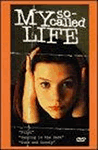 What writer does not want to grab the attention of his or her readers? Whether your lot in life is writing directions for cashing in winning lottery tickets or box labels for over-the-counter sleeping pills, you need to compel your readers to absorb all of the text (even the part about "may cause drowsiness"). Consider using, but not overusing, some of today's tips in your very next assignment.
What writer does not want to grab the attention of his or her readers? Whether your lot in life is writing directions for cashing in winning lottery tickets or box labels for over-the-counter sleeping pills, you need to compel your readers to absorb all of the text (even the part about "may cause drowsiness"). Consider using, but not overusing, some of today's tips in your very next assignment.
Highlighting Terms in Specific Contexts.
Italics. Key terms in a particular context are often italicized on their first occurrence. Thereafter they are best set in roman.
- The two chief tactics of this group, obstructionism and misinformation, require careful analysis. Those who spread misinformation intend to deceive.
"Scare quotes." Quotation marks are often used to alert readers that a term is used in a nonstandard, ironic, or other special sense. Nicknamed "scare quotes," they imply, "This is not my term" or "This is not how the term is usually applied." Like any such device, scare quotes lose their force and irritate readers if overused.
- In disk-to-film technology, "repros" are merely revised proofs.
- "Fast lanes" are sometimes mistaken for parking lots.
In works of philosophy, single quotation marks are sometimes used for similar purposes, but prominent style guides discourage that practice unless it is essential to the author's argument and not confusing to the readers.
"So-called." A word or phrase preceded by so-called should not be enclosed in quotation marks. The expression itself indicates irony or doubt.
- Boston's so-called fast lanes can sometimes be mistaken for parking lots.
- Her so-called mentor induced her to embezzle from the company.
Source: The Chicago Manual of Style



